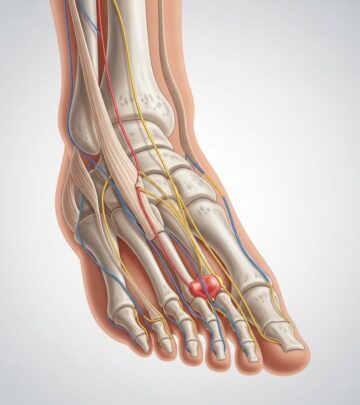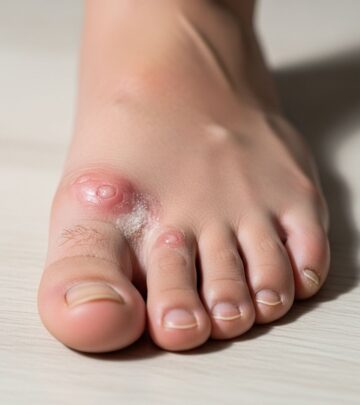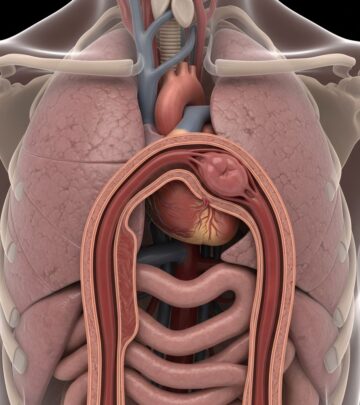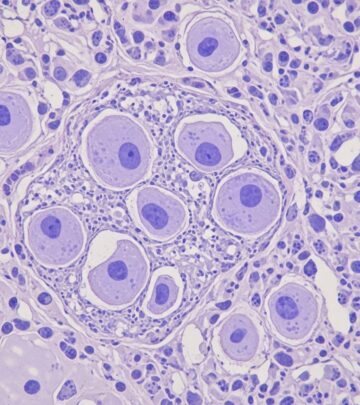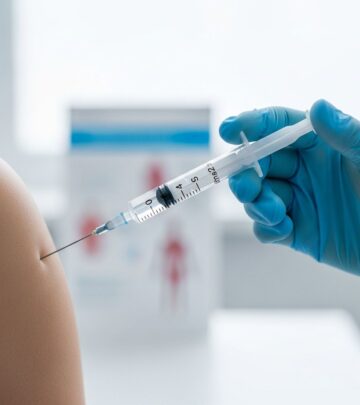Diagnosis and Treatment of Heart Valve Disease: A Comprehensive Guide
Explore detailed steps, modern tests, and advanced treatments to effectively diagnose and manage heart valve disease, empowering better heart health.

Diagnosis and Treatment of Heart Valve Disease
Heart valve disease is a condition where one or more of the heart’s valves do not function properly. This can impact blood flow through the heart and to the rest of the body, causing mild to serious health problems. Proper diagnosis and a tailored treatment strategy are essential to managing symptoms, preventing complications, and improving heart health.
Diagnosis
Diagnosing heart valve disease begins with a thorough physical examination and a discussion of symptoms, overall health history, and risk factors. A heart murmur—a distinctive whooshing sound—may be detected when listening for heart sounds using a stethoscope. To obtain a clear and structured diagnosis, several specialized tests and imaging procedures are utilized.
Key Diagnostic Tests
- Echocardiogram: Uses ultrasound (sound waves) to produce live images of the heart’s structure and functionality. It reveals blood flow patterns, the state of heart valves, and valve movement.
- Electrocardiogram (ECG or EKG): Quickly records the electrical activity of the heart. Electrodes attached to your skin display your heart rhythm and detect abnormalities.
- Chest X-ray: Provides images of the heart and lungs, useful for identifying an enlarged heart or fluid buildup which may indicate valve problems.
- Cardiac MRI: Employs magnetic fields and radio waves to create highly detailed heart images, helping assess severity and impact on heart structure.
- Exercise (Stress) Tests: Measures heart response during physical activity, often by walking on a treadmill or cycling. For those unable to exercise, medications may simulate the heart’s reaction to exertion.
- Cardiac Catheterization: A less frequently used but important procedure. A catheter is threaded to the heart via a blood vessel. Dye is injected, allowing visualization of heart arteries and chambers on X-rays if other tests are inconclusive.
Table: Common Heart Valve Disease Diagnostic Tools
| Test | Purpose | What It Shows |
|---|---|---|
| Echocardiogram | Visualize blood flow and valve structure | Valve function, heart size, blood flow |
| ECG/EKG | Measure electrical signals | Heart rhythm and arrhythmias |
| Chest X-ray | Check heart and lungs | Heart size, fluid in lungs |
| Cardiac MRI | Detailed heart imaging | Valve structure and disease severity |
| Stress Test | Assess exercise response | Symptoms during activity |
| Cardiac Catheterization | Visualize arteries/chambers | Blood flow, blockages |
Staging of Heart Valve Disease
Upon confirming a diagnosis, your healthcare team will determine the stage of heart valve disease. The stage helps guide treatment options and prognosis. Staging considers symptoms, the degree of valve dysfunction, anatomical changes, and blood flow abnormalities.
- Stage A: At risk – Presence of risk factors, no actual disease.
- Stage B: Progressive – Mild or moderate valve disease but no symptoms.
- Stage C: Asymptomatic severe – Severe valve disease without noticeable symptoms.
- Stage D: Symptomatic severe – Severe valve disease causing noticeable symptoms.
Treatment Options for Heart Valve Disease
Treatment for heart valve disease depends on its type, stage, symptoms, and the overall health of the patient. The primary goals are symptom relief, slowing disease progression, and preventing complications. Treatments can range from careful monitoring and medications to surgical procedures.
Medications
Medications do not cure heart valve disease but can help control symptoms. Typical drugs include:
- Medications to lower blood pressure.
- Diuretics to reduce fluid accumulation.
- Antiarrhythmics for controlling irregular heartbeats.
- Blood thinners (anticoagulants) to prevent clot formation (especially in those with mechanical valves or certain rhythm issues).
Procedures and Surgeries
If medications and lifestyle changes are insufficient, or the disease is advanced, procedures become necessary. The choice of procedure is influenced by the valve affected, disease severity, and patient factors.
- Heart Valve Repair
- Surgical techniques attempt to fix and preserve natural valve structure.
- Minimally invasive approaches include the use of catheters or small incisions.
- Specific repairs may involve patching holes, separating fused valve flaps, removing excess tissue, or reshaping valve leaflets.
- Heart Valve Replacement
- When repair is not possible, the damaged valve may be replaced with either a mechanical or biological (tissue) prosthesis.
- Mechanical valves require lifelong anticoagulation; tissue valves may not last as long.
- Replacement may be done via traditional open-heart surgery or less invasive techniques such as transcatheter valve replacement.
- Transcatheter Valve Procedures
- Advances now allow certain valve repairs and replacements to be performed using catheters threaded through blood vessels.
- Transcatheter aortic valve replacement (TAVR) is common for certain aortic stenosis cases.
- Similar techniques are being developed for mitral and other valve conditions.
Recovery and Aftercare
After heart valve surgery or repair, a hospital stay of several days is common. Full recovery at home may take weeks to months and often includes cardiac rehabilitation.
- Monitor for symptoms and complications.
- Follow closely with healthcare providers for regular check-ups and echocardiograms.
- Adhere to prescribed medications.
- Engage in physical therapy or cardiac rehab as recommended.
Lifestyle Considerations
Long-term management and prevention of further valve damage rely on healthy lifestyle choices and regular monitoring.
- Healthy diet: Choose heart-friendly foods rich in vegetables, lean proteins, whole grains, and limited sodium.
- Exercise: Stay active within medical guidance, avoid strenuous activities if advised.
- Weight management: Maintain a healthy weight to reduce cardiovascular strain.
- Quit smoking: Smoking cessation lowers risk of complications and further heart damage.
- Manage risk factors: Control blood pressure, cholesterol, and diabetes as recommended by your healthcare provider.
- Dental care: Inform your dentist about your heart valve disease. Some procedures require antibiotics to prevent infective endocarditis.
Complications Associated with Heart Valve Disease
- Heart failure
- Arrhythmias (irregular heartbeats)
- Blood clots
- Stroke
- Endocarditis (infection of the heart lining/valve)
Prompt diagnosis and effective treatment can markedly reduce the risk of these complications, significantly improving life expectancy and quality.
Living with Heart Valve Disease
Ongoing management is critical, especially for those with valve repairs or replacements. Regular follow-up, attention to changes in symptoms, and adherence to treatment plans are crucial.
- Attend scheduled medical appointments.
- Recognize and report new symptoms quickly, such as shortness of breath, swelling, chest pain, or palpitations.
- Inform all healthcare professionals (dentists included) about your valve condition and any surgeries.
- Wear a medical identification bracelet if advised.
Frequently Asked Questions (FAQs)
Q: What are the warning signs of heart valve disease?
A: Common symptoms include shortness of breath, fatigue, chest pain, heart palpitations, swelling in the ankles or feet, and fainting. However, some people may have no symptoms until the disease becomes advanced.
Q: Can heart valve disease be prevented?
A: While some risk factors (like age or congenital abnormalities) are unavoidable, lifestyle modifications—such as exercising regularly, eating a heart-healthy diet, and avoiding tobacco—help reduce risk. Managing underlying conditions (such as high blood pressure or diabetes) is also important.
Q: What follow-up is needed after valve repair or replacement?
A: Regular medical appointments, echocardiograms, and lab tests are required. Lifelong monitoring is necessary, especially for those with mechanical valves or ongoing symptoms. Blood thinners may be needed indefinitely with mechanical valves.
Q: Are all valve replacements open-heart surgeries?
A: No. While traditional valve replacement is an open-heart procedure, many patients qualify for minimally invasive or catheter-based replacements, such as TAVR, depending on age, health, and type of valve disease.
Q: Does heart valve disease always require surgery?
A: Not always. Mild cases may be managed with careful observation and medications. Only severe or worsening cases typically require surgical intervention.
Summary Table: Heart Valve Disease Management
| Stage | Symptoms | Treatment Options |
|---|---|---|
| Stage A: At risk | None | Monitor, manage risk factors |
| Stage B: Progressive | None | Monitor, possibly medication |
| Stage C: Asymptomatic Severe | None | Regular follow-up, possible surgery if deterioration |
| Stage D: Symptomatic Severe | Yes | Medications, repair or replacement surgery |
When to Seek Medical Help
Contact your healthcare provider if you experience any new or worsening symptoms, such as unexplained fatigue, difficulty breathing, swelling, or chest discomfort. Early detection and prompt intervention are key to preventing complications and improving outcomes.
Additional Resources
- Consult your cardiologist for personalized care plans.
- Join patient support groups for community advice and encouragement.
- Stay updated on new treatments and procedures for heart valve disease through reputable health organizations.
References
- https://www.mayoclinic.org/diseases-conditions/heart-valve-disease/diagnosis-treatment/drc-20353732
- https://www.mayoclinic.org/diseases-conditions/aortic-valve-disease/diagnosis-treatment/drc-20355122
- https://www.mayoclinic.org/diseases-conditions/heart-valve-disease/symptoms-causes/syc-20353727
- https://www.mayoclinic.org/diseases-conditions/mitral-valve-disease/diagnosis-treatment/drc-20355112
- https://www.mayoclinic.org/diseases-conditions/aortic-stenosis/diagnosis-treatment/drc-20353145
- https://www.mayoclinic.org/diseases-conditions/mitral-valve-stenosis/diagnosis-treatment/drc-20353165
- https://www.mayoclinic.org/diseases-conditions/mitral-valve-regurgitation/diagnosis-treatment/drc-20350183
- https://www.mayoclinichealthsystem.org/locations/owatonna/services-and-treatments/cardiology/diseases/valve
- https://www.mayoclinic.org/diseases-conditions/aortic-valve-regurgitation/diagnosis-treatment/drc-20353135
Read full bio of Sneha Tete

